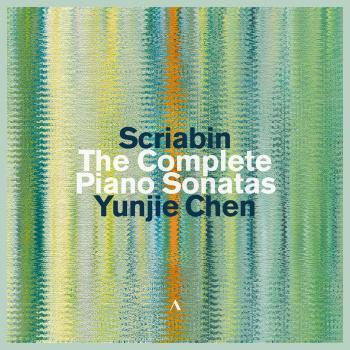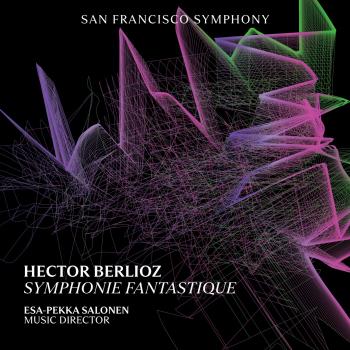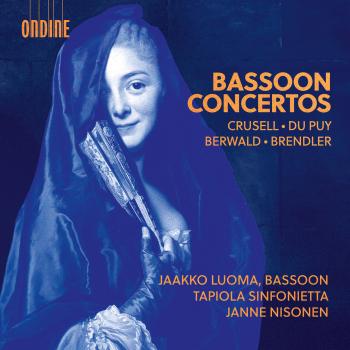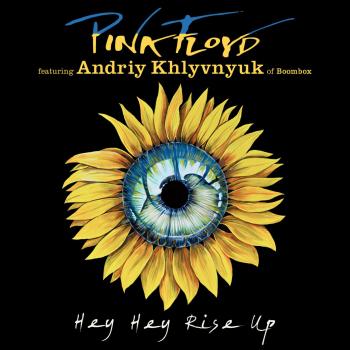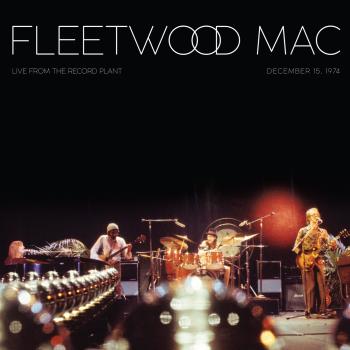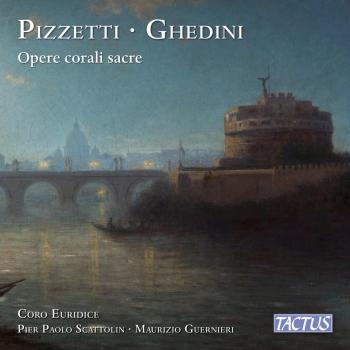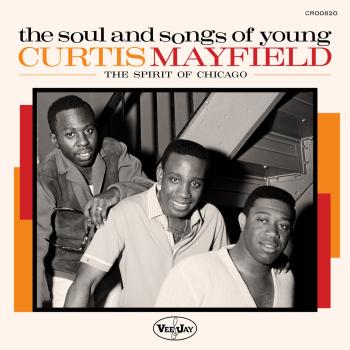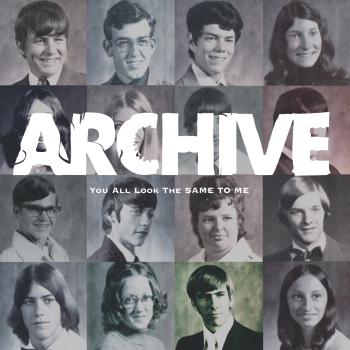
Schoenberg: Chamber Symphonies No. 1 & No. 2 Les Dissonances & David Grimal
Album info
Album-Release:
2016
HRA-Release:
21.01.2016
Label: Les Dissonances
Genre: Classical
Subgenre: Orchestral
Artist: Les Dissonances & David Grimal
Composer: Arnold Schoenberg (1874-1951)
Album including Album cover Booklet (PDF)
- 1 Chamber Symphony No. 1 in E Major, Op. 9 20:55
- 2 Chamber Symphony No. 2, Op. 38: I. Adagio 08:49
- 3 Chamber Symphony No. 2, Op. 38: II. Con fuoco 12:15
Info for Schoenberg: Chamber Symphonies No. 1 & No. 2
Chamber Symphony no.1 in E major op.9:
Composed between April 1905 and July 1906, Schoenberg’s Chamber Symphony no.1 is one of the pivotal works in the history of twentieth-century music. After tackling symphonic form on the grand scale in Pelleas und Melisande and the draft score of the Gurrelieder, Schoenberg devoted himself to smaller structures in these years (String Quartets nos.1 and 2). Through recourse to a fairly succinct form and an orchestration for fifteen musicians, he consummated his break with post-Romanticism and set out markers that would lead him on to atonality and dodecaphony. Although the work still refers to a principal key, Schoenberg bases the dynamic of his work on the successive tensions generated by the distortions of conventional harmony. With this visionary composition, he transports the listener to the frontiers of the known musical world while expressing its imminent explosion.
The work was premiered in Vienna on 8 February 1907 by the Rosé Quartet and the wind soloists of the Vienna Philharmonic Orchestra. The audience and the critics received it with distrust and rejection, while the Viennese circles championing modern music took it as their emblem. Hence it featured on the programme of the ‘Skandalkonzert’ of 8 March 1913, the founding act of the Second Viennese School, alongside pieces by Berg, Webern, Zemlinsky and Mahler. Schoenberg’s entry into this second stage of his creative life gave him the aura of a leader, though one who was ‘evolutionary rather than revolutionary’, as he himself put it.
At the first performance of the Kammersinfonie op.9, even though Gustav Mahler, who was in the audience, was among those who defended it, the press saw the bold gestures of this music and the breakdown of tonality it adumbrated as the expression of a morally decadent society corrupted by individualism. The critic Victor Lederer concluded his review in the Musikliterarische Blätter with a piece of invective: ‘You see, dear public, this symphony is a portrait of you.’
Chamber Symphony no.2 op.38:
The first sketches for the Second Chamber Symphony date from 1906, shortly after the composition of the First, but they remained in rough draft until 1939, when Schoenberg received a commission from the conductor Fritz Stiedry for a new orchestral piece. The composer found himself faced with a dilemma: ‘For a month I have been working on the Second Chamber Symphony. I spend most of the time trying to find out “What was the author getting at here?” Indeed, my style has greatly deepened meanwhile, and I find it hard to reconcile what I then rightly wrote, trusting my sense of form and not thinking too much, with my current extensive demands in respect of “visible” logic. Today that is one of the major difficulties, for it also affects the material.’
Schoenberg gave Stiedry some keys to his compositional technique: ‘The material is very good: expressive, characteristic, rich and interesting. But it is meant to be carried out in the manner which I was capable of at the time of the Second Quartet. The first movement is finished. I have altered very little; only the ending is entirely new, and the instrumentation. In a few places I have altered the harmonization, and I have changed the accompaniment figures rather frequently. After numerous experiments, I decided to rework these completely. I am very well satis ed with the movement. Besides, it is easy to play; very easy . . . Now I am working on the second movement. If I succeed in finishing it, it will be quite effective: a very lively Allegro . . . The last movement [eventually the end of the second movement] is an “epilogue”, which does bring thematically new material . . . The musical and “psychic” problems are presented exhaustively in the two completed movements; the final movement merely appends, so to speak, certain “observations”.’
In expanding and completing this work, Schoenberg returned to tonality at a late stage in his career. In 1939 he added twenty bars to the first movement, wrote the second half of the second movement, and revised the whole orchestration in order to differentiate the parts more effectively and clarify the lines. Both his partisans and his detractors criticised Schoenberg for this stylistic volte-face, which he justified in his 1948 article ‘On revient toujours’ (One always comes back): ‘I was not destined to continue in the manner of Transfigured Night or Gurre-Lieder or even Pelleas and Melisande. The Supreme Commander had ordered me on a harder road. But a longing to return to the older style was always vigorous in me, and from time to time I had to yield to that urge. This is how and why I sometimes write tonal music. To me stylistic differences of this nature are not of special importance. I do not know which of my compositions are better; I like them all, because I liked them when I wrote them.’
Les Dissonances
David Grimal, violin
David Grimal
is a musician who enjoys an international reputation for the originality of his musical career. In his tireless quest to reflect on the role of his art in society, he juxtaposes perspectives in order to make music differently by reinventing the sense of the collective.
As an internationally renowned soloist, he has been invited to perform under the direction of the leading conductors (Christoph Eschenbach, Heinrich Schiff, Lawrence Foster, Emmanuel Krivine, Mikhail Pletnev, Rafael Frühbeck de Burgos, Peter Eötvös, Andris Nelsons, Jukka- Pekka Saraste, Christian Arming, Andrés Orozco-Estrada, Stanisław Skrowaczewski, Michel Plasson, Hubert Soudant, François-Xavier Roth, Pascal Rophé, Gerard Korsten, James Judd, Matthias Bamert, Lawrence Foster, Jaap van Sweden etc.) with such formations as the Orchestre de Paris, the Orchestre Philharmonique de Radio France, the Chamber Orchestra of Europe, the Berliner Symphoniker, the Russian National Orchestra, the New Japan Philharmonic, the English Chamber Orchestra, the Mozarteum Orchester Salzburg, the Jerusalem Symphony, the Prague Philharmonia, the Gulbenkian Orchestra Lisbon, Sinfonia Varsovia, the Florida Philharmonic and the Hungarian Radio Symphony Orchestra…
He is a welcome guest in the world’s foremost concert halls, among them Suntory Hall in Tokyo, the Philharmonie de Paris, the Vienna Musikverein, the Amsterdam Concertgebouw, the Berlin Konzerthaus, Wigmore Hall in London, the Zurich Tonhalle, Lincoln Center in New York, the Tchaikovsky Conservatory in Moscow, the Ferenc Liszt Academy in Budapest, the Victoria Hall in Geneva, the Auditorio Nacional in Madrid, the Théâtre des Champs-Élysées in Paris, the National Concert Hall in Taiwan and Bozar in Brussels.
Many composers have dedicated works to him, including Marc-André Dalbavie, Brice Pauset, Thierry Escaich, Lisa Lim, Jean-François Zygel, Alexandre Gasparov, Victor Kissine, Fuminori Tanada, Ivan Fedele, Philippe Hersant, Anders Hillborg, Oscar Bianchi, Guillaume Connesson, Frédéric Verrières, Richard Dubugnon, Eric Montalbetti …
An indefatigable researcher, he re-examines the early music repertory and in particular explores historically informed performance practice with such musicians as Andreas Staier, Brice Pauset, Mathieu Dupouy and Maude Gratton. He is a sought-after pedagogue, and currently teaches at the Hochschule für Musik in Saarbrücken, where he also develops conductorless projects with the student orchestra. He plays the 1710 “Ex-Roederer” Stradivarius with bows by Pierre Tourte, Léonard and François-Xavier Tourte and Pierre Grunberger.
David Grimal is regularly invited to sit on the juries of international competitions and gives masterclasses all over the world.
Les Dissonances
The violinist David Grimal, equally committed to the solo and chamber repertories, appears in the world’s leading classical music venues. As an innovative artist, he aims to reinvent musical practice by leading several projects successfully developing the spirit of “working together”.
For the past ten years he has devoted part of his career to developing Les Dissonances, of which he is artistic director. In this laboratory of ideas, conceived as a collective of musicians, David Grimal and his friends experience music as a joy rediscovered and tackle the symphonic repertory in the spirit of chamber music. The only ensemble that explores the large-scale symphonic repertory without a conductor, Les Dissonances have established residencies in prestigious institutions that offer long-term collaborations, including the Philharmonie de Paris, the Opéra de Dijon and Le Volcan in Le Havre, and appear regularly all over Europe.
Inspired by his experience with Les Dissonances, David Grimal develops projects as artistic director with other orchestras and regular ensembles.
As an artistic director, he develops the concept ‘Let’s play together!’ based on his experience with Les Dissonances. David Grimal rehearses the entire concert programme with the musicians in order to prepare them to play without a conductor at the concert. He shares the platform with them also by performing a concerto. He is invited by many orchestras to work with them and play the great violin concertos, notably Budapesti Vonosok, Anima Chamber Orchestra, Sinfonietta Cracovia, Moscow Chamber Orchestra, Orquesta Sinfónica de Galicia, Orchestra Sinfonica de Murcia, Bilbao Orkestra Sinfonikoa, Orchestre de l’Opéra national de Lorraine, National Orchestra of Metz, Orchestre Philharmonique de Strasbourg, Taipei Symphony Orchestra…
Booklet for Schoenberg: Chamber Symphonies No. 1 & No. 2

